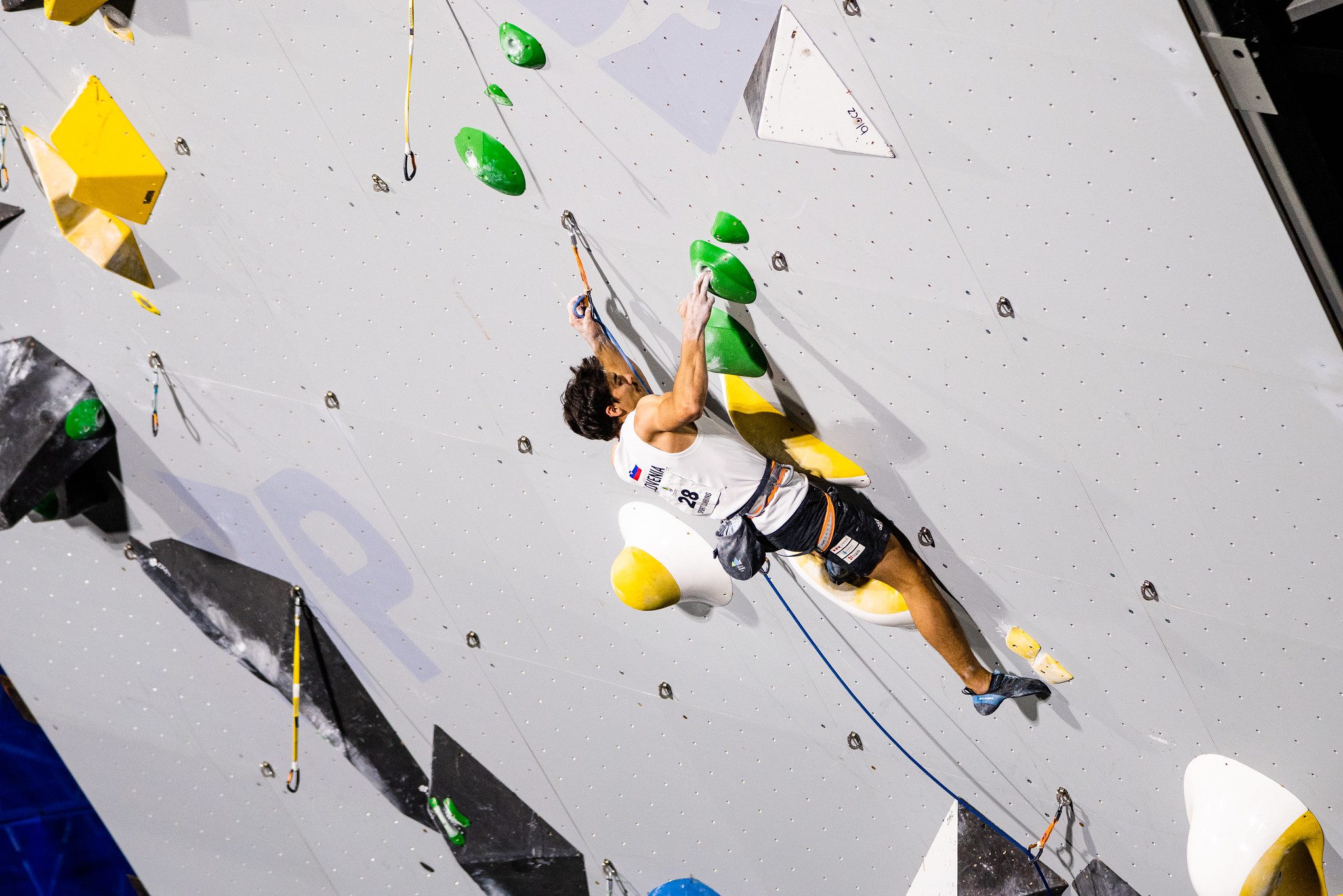Train Pockets the Right Way
Build strength and prevent injuries with proper pocket training technique
 Photo by: Daniel Gajda/IFSC
Photo by: Daniel Gajda/IFSC
Prepping for a trip to the Red River Gorge? Or maybe some European limestone? If so, you’re probably training pockets. Your front two, middle two—maybe your back two or monos as well. The most popular way to train pockets is with the pocket holds on a hangboard. Dead hangs (perhaps with added weight) are great for building maximum strength. Repeaters are useful for building strength endurance.
If you’re training pockets, you need to make sure that you’re doing it safely with the correct grip type. Hard pocket pulling makes your hands susceptible to injury, particularly in the lumbrical muscles. Luckily, with proper form and the right training protocol, you can avoid these all-too-common lumbrical injuries.
Pockets and Lumbricals
The lumbricals are a series of muscles in the palm of your hand. Unlike most muscles, which attach to bone, the lumbricals attach to tendon. They don’t provide a ton towards finger strength, but they do provide stability and fine motor control. When your hand is in a pocket grip, some of your fingers are extended (the ones in the pocket) while your other fingers are flexed inward towards your palm. In the pinky and ring finger lumbricals in particular, these different directions of force can cause a shearing action across the lumbrical which can strain or tear the muscle.
For example, when performing a two-finger pocket grip with your middle and ring finger, your pinky lumbrical—which is shared between your pinky and ring finger—is being pulled in two opposite directions. Your ring finger is extended and pulling one half of the lumbrical upwards while your pinky is flexed and pulling the other half of the lumbrical downwards.

Pocket Grip Types
There are two ways to pull on pockets, and there are pros and cons for each method. The first way is more dangerous to the lumbricals but it allows you to pull harder by engaging all four finger tendons. The second way is safer but produces less pulling force. To understand the differences between these two methods, let’s label our fingers. Our “inside” fingers are the ones in the pocket. Our “outside” fingers are the ones not in the pocket.
In the more dangerous yet stronger method, you flex your outside fingers deep into your palm. In the safer but less strong method, you do not flex your outside fingers fully into your palm. By keeping your outside fingers adjacent (or parallel) to your inside fingers, you help prevent the shearing force across the lumbrical. You can still bend your outside fingers to get them out of the way, but the sections of your outside fingers closest to your palm should remain parallel to your inside fingers.
Dr. Jason Hooper of Hooper’s Beta succinctly shows these two methods visually in the video below:
Which Method to Choose?
If you’re newer to climbing or pocket training in general, it’s a good idea to stick with the safer method. If you’re more experienced, it can be a good idea to train both types of pocket grip, both on and off wall. Be sure to use a progressive approach (increase weight or intensity slowly within a session and between sessions), and it’s wise to focus the bulk of your efforts on the safer method.
If you want to learn more about the lumbricals—their anatomy, their use in climbing, how they get injured, and how to rehab them—check out this nearly 20-minute deep dive again by Dr. Hooper.


